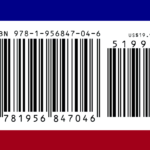Introduction
In the world of digital communication, identifiers play a crucial role in how information is routed and processed. One such identifier that often surfaces in email conversations is It . This term represents a common element found in email addresses and forwarding systems. Understanding Fwd-200b is essential for anyone looking to navigate the complexities of email communication effectively. This article will delve into the significance of It in email communication and its implications for online security.
Understanding Fwd-200b: A Breakdown
Components of the Identifier
To fully grasp the meaning of It , we must break down its components:
- Fwd: This prefix indicates that the message has been forwarded from one recipient to another. It signifies that the original sender is not the current recipient, which is important in understanding the context of the email.
- 200b: The “200” typically represents a version or an identifier for the forwarding instance, while “b” might indicate a specific subset or category within that version. Together, they help in categorizing and routing the email efficiently.
Purpose and Functionality
It serves several key functions in email communication:
- Message Routing: It helps email servers identify how to handle a forwarded message. The inclusion of this identifier allows the system to track the email’s journey through various nodes.
The Role of Fwd-200b in Email Addressing
Forwarding Messages
One of the primary functions of It is to facilitate the forwarding of messages.
Email Structure
In the structure of an email, It usually appears as part of the subject line or metadata. For instance, an email subject may read:
makefileCopy codeFwd: Important Update - Fwd-200b
This format indicates both the action taken (forwarding) and the specific identifier associated with that action, which may be useful for organizational purposes.
Best Practices for Using Fwd-200b
To maximize the effectiveness of It in email communication, consider the following guidelines:
- Use Clear Subject Lines: Including It in the subject line can help recipients quickly understand the nature of the email.
- Limit Forwarding: Avoid excessive forwarding to maintain clarity and reduce confusion about the email’s origin.
Security Implications of Fwd-200b
Potential Vulnerabilities
While It plays a critical role in email communication, it can also introduce vulnerabilities:
- Miscommunication: If recipients do not understand the significance of It , they may misinterpret the context, leading to potential security risks.
- Phishing Attempts: Cybercriminals may exploit the familiar format of forwarded emails to trick users into revealing personal information.
Best Practices for Security
To ensure email security when using It , follow these tips:
- Verify Email Origins: Always check the original sender’s address before responding to forwarded emails.
- Educate Users: Make sure everyone in your organization understands the implications of forwarded messages and identifiers like It
Phishing and Spam
It can be misused in phishing or spam attempts. Attackers may forward malicious emails with It to make them appear legitimate. Users should remain vigilant and cautious about any forwarded emails, especially those requesting sensitive information.
Fwd-200b in a Broader Context: Digital Communication and Beyond
Email Protocols
It is part of the larger email protocol ecosystem. It interacts with various email standards, such as:
- SMTP (Simple Mail Transfer Protocol): This protocol is responsible for sending emails and routing them correctly, including those with identifiers like It
- IMAP/POP3: These protocols help retrieve emails, and understanding how It fits into this system can aid in troubleshooting.
Other Applications
Beyond email, similar identifiers can be found in various digital communication contexts, including:
- Messaging Apps: Platforms like WhatsApp and Slack use similar identifiers to track message forwarding and context.
- Social Media: Forwarded posts or shared content may use identifiers to indicate their origin and ensure proper attribution.
The Future of Email Addressing
As digital communication evolves, so too will the identifiers used in email addressing. Potential future trends include:
- Improved User Interfaces: Future email platforms might streamline the visibility of identifiers like It , making them easier for users to understand.
You May Also Like: Unlock the Best Quotes with MyDearQuotes.com Quotes Archives
Conclusion
In summary, Fwd-200b is more than just a simple identifier; it plays a vital role in email communication by clarifying message origins and facilitating forwarding. While it brings numerous benefits, such as improved context and routing, it also poses security challenges that users must navigate. Understanding Fwd-200b is essential for anyone looking to enhance their email communication skills and maintain security in their digital interactions.
FAQs
What does Fwd-200b mean in an email?
Fwd-200b indicates that an email has been forwarded, with “200” possibly representing a version and “b” denoting a specific category.
How does Fwd-200b affect email communication?
It provides context by showing that a message has been forwarded, helping recipients understand the email’s origin.
Can Fwd-200b be used in phishing attempts?
Yes, attackers may use the familiar format of Fwd-200b to trick users into thinking a forwarded email is legitimate.
What are best practices for using Fwd-200b?
Use clear subject lines, limit excessive forwarding, and educate users about its significance to enhance communication clarity.
How is Fwd-200b related to email protocols?
Fwd-200b interacts with email protocols like SMTP, helping route forwarded messages correctly within the email system.










